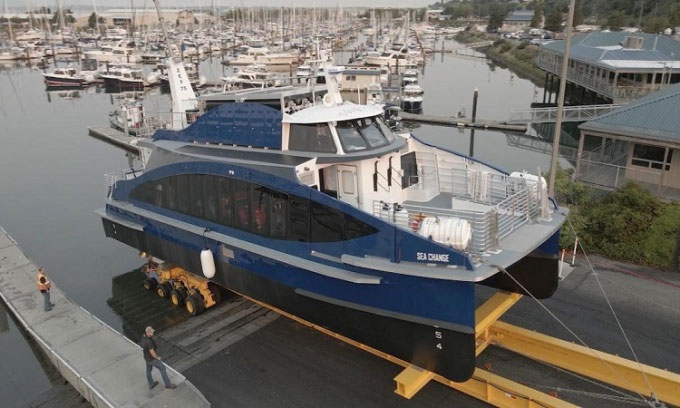The hydrogen-powered ferry, capable of carrying 75 passengers, is highly environmentally friendly and could help save the planet from the adverse effects of climate change.

The hydrogen-powered ferry helps protect the environment by not emitting CO2. (Photo: CBS)
For over a decade, local residents have been traveling around San Francisco Bay on ferries primarily powered by diesel, a fossil fuel contributing to global warming. However, the world’s first hydrogen-powered passenger ferry, which emits no gases, is now operational in the bay.
Instead of using a large diesel engine to generate power, the vessel utilizes a hydrogen fuel cell, according to Jeff Sokolik, an employee of All American Marine in Bellingham, Washington, the company that built the ferry for 75 passengers. “When you use hydrogen to generate electricity, the only byproduct is hot water; the vehicle emits no gases and is completely clean,” said Ron Willie, the company’s director.
The maritime transportation industry, primarily international shipping, is one of the contributors to climate change. This industry emits about 3% of the total carbon dioxide (CO2) emissions globally, more than the aviation industry. A much larger hydrogen passenger ferry is currently being built in Europe, and the technology has potential applications for container ships. However, if hydrogen leaks during production or from storage tanks, such incidents could contribute to global warming.
“There are many hopes and promises surrounding hydrogen fuel, but to protect the climate, we need to understand the risks of leakage,” emphasized Amanda Leland, executive director of the Environmental Defense Fund.


















































